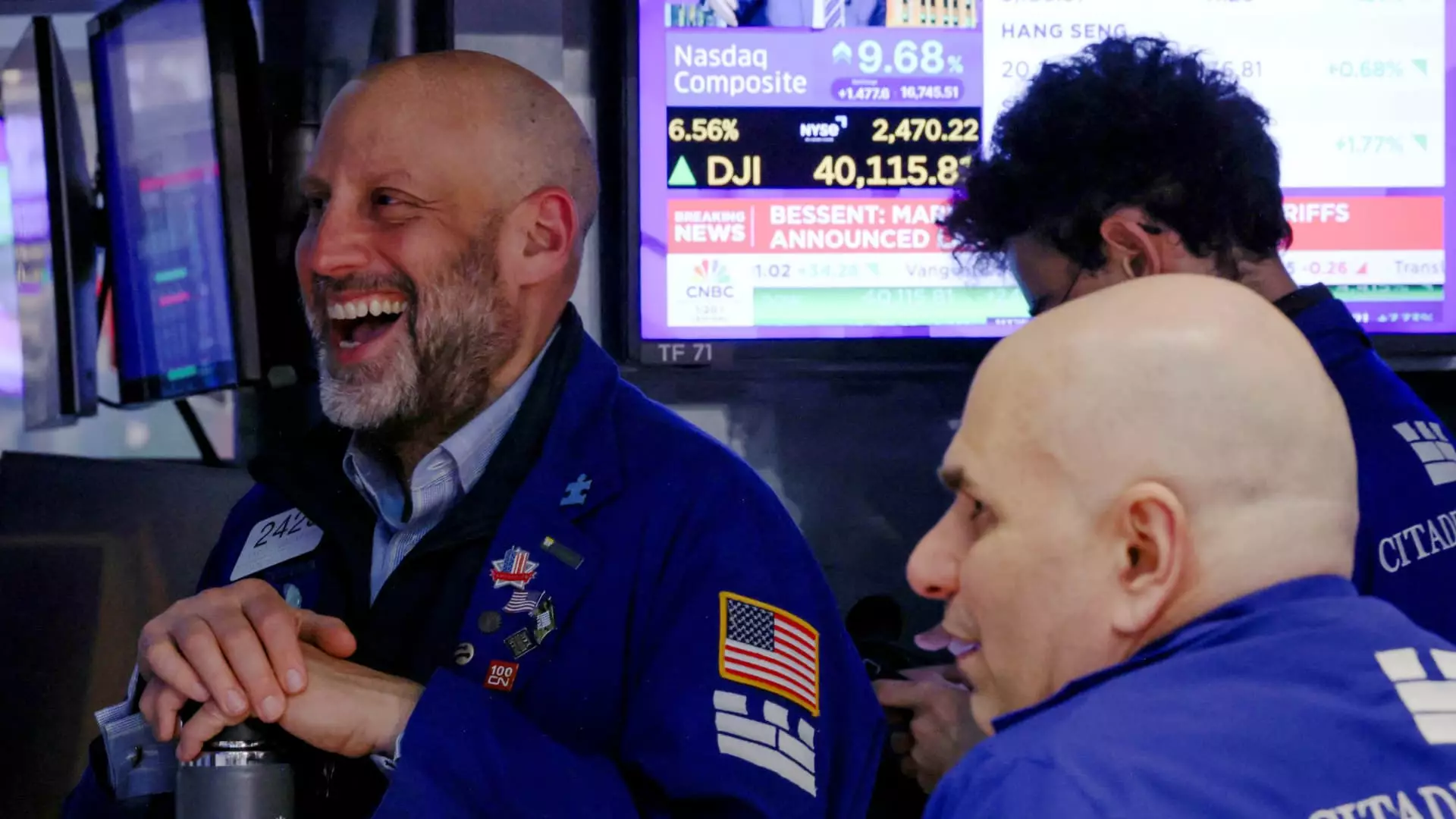On an otherwise languid Wednesday, U.S. financial markets experienced a jolt that can only be described as a shockwave. President Donald Trump, in a somewhat unexpected move, announced a 90-day pause on certain “reciprocal” tariffs, propelling major indices into the stratosphere. Investors, who had been bracing for a chaotic tit-for-tat scenario with China, suddenly found themselves on a euphoric upward trajectory. The Dow Jones Industrial Average surged by a staggering 3,028 points—a remarkable 8% increase—the largest single-day gain since 2020. Meanwhile, the Nasdaq Composite celebrated its biggest leap in over two decades, climbing a breathtaking 12.4%.
However, this spike, seemingly fueled by Trump’s announcement, raises critical questions about the sustainability and credibility of such market rallies. Is this surge a genuine reflection of improving economic conditions, or merely a temporary blip in a far more turbulent landscape? The announcement, steeped in both promise and uncertainty, seems to have provided investors with a brief euphoric escape, but at what cost?
The Mixed Signals of Diplomacy and Deception
Trump’s proclamation on Truth Social emphasized the hopes of a 10% baseline tariff for all nations other than China during the negotiation window, while simultaneously raising the tariff on Chinese goods to an astounding 125%. One can’t help but notice the dissonance here; is this a genuine olive branch or merely a ploy to quell the mounting fears of recession? While Treasury Secretary Scott Bessent sought to convey some semblance of clarity, emphasizing the return to a lower tariff for everyone except China, the details remain obscured. The situation is emblematic of the erratic trade policies that have characterized Trump’s administration: swift, unpredictable, and often accompanied by declarations that could be as fleeting as they are dramatic.
The stock rebound, driven heavily by companies like Nvidia, Apple, and Tesla, reveals just how sensitive this market is to executive whims. Traders seemed eager to latch onto any sign of optimism, but this fractious relationship with tariffs and trade wars dampens the celebratory mood. It’s not just the immediate gains that hold significance; the underlying uncertainties bring to light the risks associated with relying on presidential proclamations to define market trajectories.
Understanding the Investor Psyche: Fear and Euphoria
The market’s volatile reaction embodies an investor psyche that oscillates between extreme fear and raw euphoria. The events of the previous week, characterized by a significant drop—over 4,500 points for the Dow and a hefty 12% loss for the S&P 500—illustrate the psychological warfare at play. Investors were caught in a quagmire of panic as fears around long-term economic repercussions surged to the forefront. Trump’s late-afternoon press conference where he reassured investors against their fears might have done little to mitigate the broader anxieties that surround such aggressive financial maneuvers.
Adam Crisafulli, founder of Vital Knowledge, described this 90-day pause as a critical catalyst for a “violent rebound,” yet also warned of the enduring nature of tariff-induced pressures. His sentiments encapsulate the feeling of precarious hope, as traders cling to the idea that a more stable trading environment could materialize, while secretly grappling with the knowledge that the fundamental issues at play remain unresolved.
The Illusion of Stability in a Chaotic World
Despite Trump’s claims that investors were being exaggeratedly cautious, he himself exudes a dangerously cavalier attitude toward the complexities inherent in international trade negotiations. The tariff system is not merely an economic factor; it has strategic ramifications that can affect global relationships, supply chains, and consumer prices. Relying on a temporary halt in tariff implementation fails to address the root causes of economic instability and could easily backfire when negotiations invariably stall or regress.
Investors, while currently buoyed by the day’s events, must navigate carefully. Opportunities abound but caution is warranted. As Sam Stovall aptly noted, “Fool me once, shame on you; fool me five times, shame on me.” This sentiment resonates deeply in a landscape where the volatility and unpredictability of investments can turn a windfall into a trap. The market’s exuberance may feel gratifying in the moment, but lurking beneath the surface lies a tempest of uncertainty, ready to pounce as the 90-day reprieve nears its end.


Leave a Reply